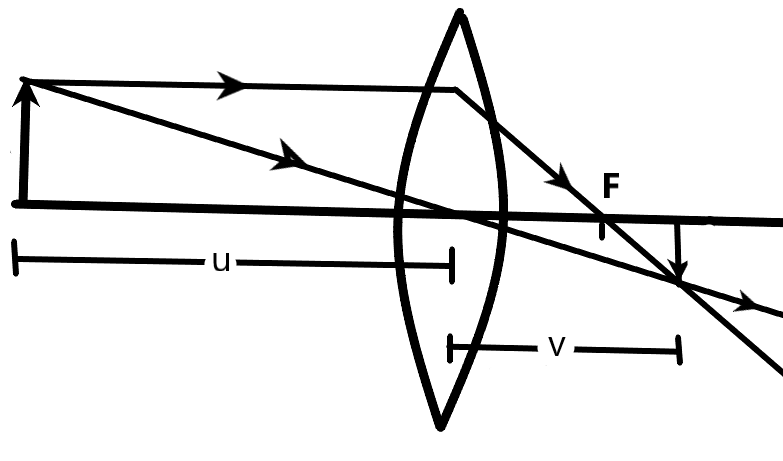
A candle placed 25 cm from a lens forms an image on a screen placed 75 cm on the other side of the lens. The focal length and the type of lens should be?
A) +18.75 cm and convex lens
B) -18.75 cm and concave lens
C) +20.25 cm and concave lens
D) -20.25 cm and concave lens
Answer
558.9k+ views
Hint: We need to understand the relation between the object distance and the image distance with the focal length and the nature of the lens used to solve the given problem. We can easily solve this using the lens formula and the sign conventions.
Complete step by step solution:
It is given that a candle is placed in front of a lens at a distance of 25 cm and the image is formed behind the lens at a distance of 75 cm. We can easily use the lens formula to get the focal length of the lens very easily.
The lens formula is given by –
\[\dfrac{1}{f}=\dfrac{1}{v}-\dfrac{1}{u}\]
We know that the object distance from the lens is 25 cm and the image distance from the lens is 75 cm. We can apply the above formula to get the focal length as –
\[\begin{align}
& \dfrac{1}{f}=\dfrac{1}{v}-\dfrac{1}{u} \\
& \Rightarrow \dfrac{1}{f}=\dfrac{1}{75}-\dfrac{1}{-25} \\
& \Rightarrow \dfrac{1}{f}=\dfrac{1+3}{75} \\
& \therefore f=+18.75cm \\
\end{align}\]
The focal length of the lens is +18.75 cm.

We understand that the object is placed beyond the focal length and the image is formed by convergence. So, the lens used is a convex lens.
The correct answer is option A.
Note: We should be very careful when considering the signs of the distance involved such as the object distance and the image distance. We can get entirely different results for focal length if the signs are considered wrongly for the object and image distance.
Complete step by step solution:
It is given that a candle is placed in front of a lens at a distance of 25 cm and the image is formed behind the lens at a distance of 75 cm. We can easily use the lens formula to get the focal length of the lens very easily.
The lens formula is given by –
\[\dfrac{1}{f}=\dfrac{1}{v}-\dfrac{1}{u}\]
We know that the object distance from the lens is 25 cm and the image distance from the lens is 75 cm. We can apply the above formula to get the focal length as –
\[\begin{align}
& \dfrac{1}{f}=\dfrac{1}{v}-\dfrac{1}{u} \\
& \Rightarrow \dfrac{1}{f}=\dfrac{1}{75}-\dfrac{1}{-25} \\
& \Rightarrow \dfrac{1}{f}=\dfrac{1+3}{75} \\
& \therefore f=+18.75cm \\
\end{align}\]
The focal length of the lens is +18.75 cm.

We understand that the object is placed beyond the focal length and the image is formed by convergence. So, the lens used is a convex lens.
The correct answer is option A.
Note: We should be very careful when considering the signs of the distance involved such as the object distance and the image distance. We can get entirely different results for focal length if the signs are considered wrongly for the object and image distance.
Recently Updated Pages
Master Class 12 English: Engaging Questions & Answers for Success

Master Class 12 Business Studies: Engaging Questions & Answers for Success

Master Class 12 Economics: Engaging Questions & Answers for Success

Master Class 12 Social Science: Engaging Questions & Answers for Success

Master Class 12 Maths: Engaging Questions & Answers for Success

Master Class 12 Chemistry: Engaging Questions & Answers for Success

Trending doubts
What are the major means of transport Explain each class 12 social science CBSE

Which are the Top 10 Largest Countries of the World?

Draw a labelled sketch of the human eye class 12 physics CBSE

Explain sex determination in humans with line diag class 12 biology CBSE

The pH of the pancreatic juice is A 64 B 86 C 120 D class 12 biology CBSE

Explain sex determination in humans with the help of class 12 biology CBSE




